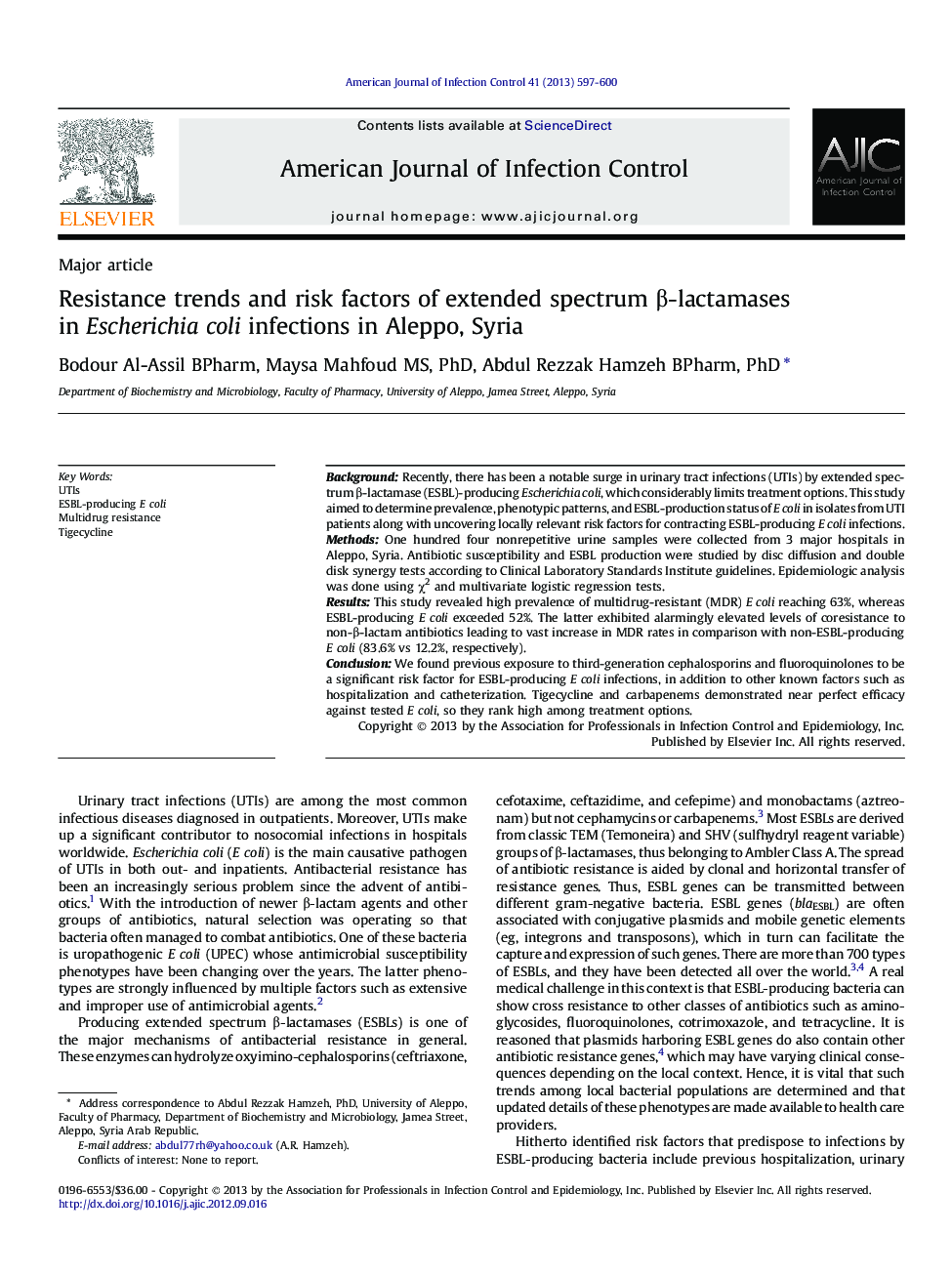| Article ID | Journal | Published Year | Pages | File Type |
|---|---|---|---|---|
| 2639730 | American Journal of Infection Control | 2013 | 4 Pages |
BackgroundRecently, there has been a notable surge in urinary tract infections (UTIs) by extended spectrum β-lactamase (ESBL)-producing Escherichia coli, which considerably limits treatment options. This study aimed to determine prevalence, phenotypic patterns, and ESBL-production status of E coli in isolates from UTI patients along with uncovering locally relevant risk factors for contracting ESBL-producing E coli infections.MethodsOne hundred four nonrepetitive urine samples were collected from 3 major hospitals in Aleppo, Syria. Antibiotic susceptibility and ESBL production were studied by disc diffusion and double disk synergy tests according to Clinical Laboratory Standards Institute guidelines. Epidemiologic analysis was done using χ2 and multivariate logistic regression tests.ResultsThis study revealed high prevalence of multidrug-resistant (MDR) E coli reaching 63%, whereas ESBL-producing E coli exceeded 52%. The latter exhibited alarmingly elevated levels of coresistance to non-β-lactam antibiotics leading to vast increase in MDR rates in comparison with non-ESBL-producing E coli (83.6% vs 12.2%, respectively).ConclusionWe found previous exposure to third-generation cephalosporins and fluoroquinolones to be a significant risk factor for ESBL-producing E coli infections, in addition to other known factors such as hospitalization and catheterization. Tigecycline and carbapenems demonstrated near perfect efficacy against tested E coli, so they rank high among treatment options.
